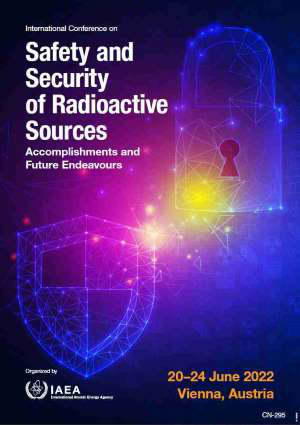Speaker
Description
A regulatory body’s competence is dependent on, among other things, the competence of its staff. A necessary, but not sufficient, condition for a regulatory body to be competent is that its staff can perform the tasks related to its functions.
The IAEA has introduced a methodology and an assessment tool —Systematic Assessment of Regulatory Competence Needs (SARCoN) — for analysing the training and development needs of a regulatory body and, through a gap analysis, provides guidance on establishing and meeting competence needs.
IAEA TECDOC-1860 “Methodology for the Systematic Assessment of the Regulatory Competence Needs (SARCoN) for Regulatory Bodies of Radiation Facilities and Activities”, published in 2019, provides guidance on analysis of required and existing competences to identify those required by a regulatory body regulating radiation facilities and activities in order to perform its functions, and therefore the associated needs for acquiring those competences. It is expected that this technical document will also support the Member States in the implementation of paras 20-22 of the Code of Conduct on the Safety and Security of Radioactive Sources, Article 8 of the Convention on Nuclear Safety (CNS) and Modules 3 and 4 of the Integrated Regulatory Review Service (IRRS) for radiation facilities and activities.
IAEA TECDOC 1860 is complemented by the SARCoN software and is to be used in conjunction with IAEA Safety Reports Series No. 79 “Managing Regulatory Body Competence”, which provides generic guidance, based on IAEA Safety Requirements, for the development of a competence management system within a regulatory body’s integrated management system. Accordingly, the proposed competence model is based on a quadrant structure. Each quadrant comprises a set of quadrant competence areas (QA), as illustrated in Figure 1, with each of the quadrant competence areas comprising a set of specific competences referred to as knowledge, skills and attitudes (KSAs).
The quadrant model described is generally applicable to all regulatory bodies. However, the specific KSAs associated with the quadrant competence areas need to be tailored to the individual characteristics of each regulatory body and the types of facilities and activities that it regulates. This means each regulatory body needs to establish its own set of competences, assessment criteria (levels of competence) and standards for evaluation.
TECDOC 1860 can also be used, in conjunction with IAEA-TECDOC-1757 “Methodology for the Systematic Assessment of the Regulatory Competence Needs (SARCoN) for Regulatory Bodies of Nuclear Installations, by regulatory bodies regulating both radiation and nuclear facilities.”
| Country OR Intl. Organization | IAEA |
|---|

